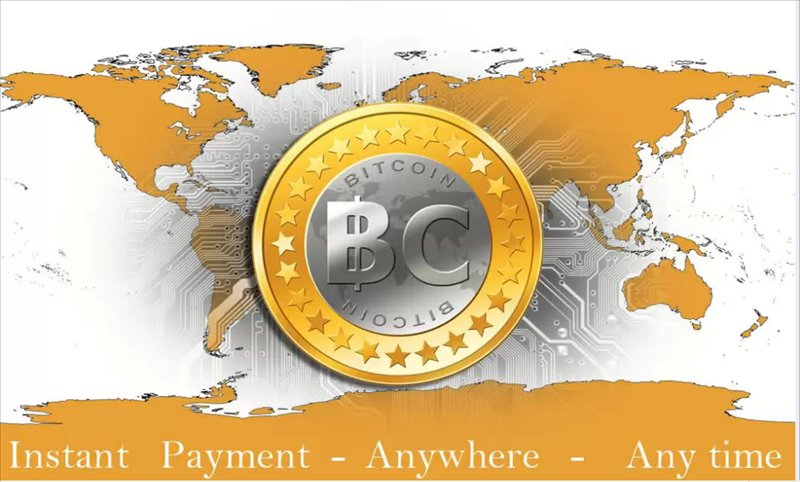Bitcoin
https://en.bitcoin.it/wiki/Satoshi_Nakamoto
 Bitcoin is a decentralized digital currency created by developer Satoshi Nakamoto. It does not rely on a central server to process transactions or store funds. There are a maximum of 2,100,000,000,000,000 Bitcoin elements (called satoshis), currently most commonly measured in units of 100,000,000 known as BTC.
Bitcoin is a decentralized digital currency created by developer Satoshi Nakamoto. It does not rely on a central server to process transactions or store funds. There are a maximum of 2,100,000,000,000,000 Bitcoin elements (called satoshis), currently most commonly measured in units of 100,000,000 known as BTC.
As of April 2013, it is the most widely used alternative currency with the total market cap at over 1.5 bilion US dollars
Bitcoin has no central issuer; instead, the peer-to-peer network regulates Bitcoins, transactions and issuance according to consensus in network software. Bitcoins are issued to various nodes that verify transactions through computing power; it is established that there will be a limited and scheduled release of no more than 21 million BTC worth of coins, which will be fully issued by the year 2140.
Internationally, Bitcoins can be exchanged and managed through various websites and software along with physical banknotes and coins.
Bitcoin is a digital peer-to-peer commodity that was created by Satoshi Nakamoto. One Bitcoin can be divided into 100 million smaller units that are called Satoshis

Bitcoins can be sent, received and managed through a number of different independent websites, desktop clients and mobile device software. Physical notes and coin forms can also be traded. Internationally, Bitcoin can be exchanged for goods, services, and other traditional fiat currencies.
In some respects, Bitcoin is similar to Second Life Linden Dollars and WoW Gold in that it is "virtual" and does not meet the traditional definition of "currency." Like Linden Dollars and WoW gold it can be exchanged for real dollars or other real currencies by means of an exchange.
Unlike the above examples, Bitcoin isn't associated with a virtual gaming platform. Bitcoin exists primarily as an unfettered means of exchange for goods and services. Also, Bitcoins are not issued the way Linden Dollars are: they're mined. You see, Bitcoin technically speaking, is based upon advanced cryptography. In order to get Bitcoins computers perform advanced arithmetic and eventually discover one. This is conceptually similar to how super computers locate previously undiscovered prime numbers by performing advanced arithmetic for extended periods.
There is one more key factor that makes Bitcoin unique, scarcity. The cryptography rules that make Bitcoin so hard to mine (computationally speaking) also impose a limit on the total number of Bitcoins: 21,000,000. That's right, there is a fixed number of Bitcoins after which no more can be mined. This has a wide range of economic implications. The two most important are:
1. Bitcoin mining won't be viable forever.
2. Bitcoins should at least theoretically tend toward deflation and become more valuable over an extended period of time.
Bitcoins are sent and received through clients and websites called wallets. They send and confirm transactions to the network through Bitcoin addresses - the identifiers for users’ Bitcoin wallets within the network. Various wallets are available in the form of desktop client, e-wallets and mobile wallets.
Bitcoin uses public-key cryptography using Elliptic Curve DSA. Every user in the Bitcoin network has a digital wallet containing a number of cryptographic key pairs. Payments are made to Bitcoin “addresses”: human-readable strings of numbers and letters around 33 characters in length, always beginning with the digit 1 or 3, as in the example of 1C4hcGPZ3sci5NxmVmT1NPYpVKn4V8Pub9. These represent an ECDSA public key or combination thereof. The wallet’s private keys are used to authorize transactions from that user’s wallet.
Users obtain new Bitcoin addresses from any Bitcoin client software, including web-based Bitcoin wallets. Creating a new address is a completely offline process and requires no communication with the Bitcoin peer-to-peer network.
Transaction fees may be included with any transfer of Bitcoins. As of 2012 many transactions are processed in a way which makes no charge for the transaction. For transactions which draw coins from many Bitcoin addresses and therefore have a large data size, a small transaction fee is usually expected.
To prevent double-spending, the network implements what Nakamoto describes as a peer-to-peer distributed timestamp server, which assigns sequential identifiers to each transaction, which are then hardened against modification using the idea of chained proofs of work (shown in the Bitcoin client as confirmations). In his white paper, https://bitcoin.org/bitcoin.pdf Nakamoto wrote: “we propose a solution to the double-spending problem using a peer-to-peer distributed timestamp server to generate computational proof of the chronological order of transactions.” Whenever a node broadcasts a transaction, the network immediately labels it as unconfirmed. The confirmation status reflects the likelihood that an attempt to reverse the transaction could succeed. Any transaction broadcast to other nodes does not become confirmed until the network acknowledges it in a collectively maintained time-stamped list of all known transactions, the block chain.
Download free pdf e-book ===>>>bitcoin-beginner-guide.pdf (2,6 MB)
